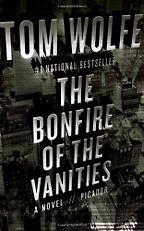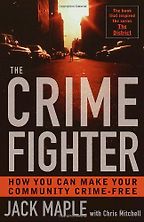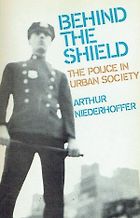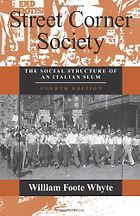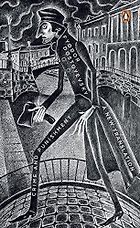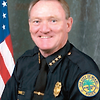Your first book is Behind the Shield: The Police in Urban Society by Arthur Niederhoffer.
Well, I was a young rookie police officer and was attending college and that was one of the books recommended to us. Niederhoffer was a sociologist with over 20 years experience in the NYPD and the book was required reading for young, idealistic men – nowadays you’d say men and women but then it was men – starting out in the profession. It’s a book about the inevitable erosion from idealism to cynicism and the attitude of us against them.
He talks about ways of defeating the culture of cynicism in the police force, one of which was to make policing a profession and not just a job. There were many efforts in the late 1960s and early 70s to achieve this via education. Serendipitously, it was during this era, the Vietnam War period, that a law enforcement education programme was initiated by Richard Nixon, of all people. This programme, called LEEP (Law Enforcement Education Programme) educated tens of thousands of police officers, including myself, who got to go to college. LEEP did for policing what the GI Bill did for returning vets after World War II.
Nowadays, academics criticise Niederhoffer as superficial, but at the time his book was considered to be quite relevant. He tells the story of a Denver police officer just out of the academy, learning the ways of the profession. At the beginning, he accepts offers of free cups of coffee and free cigarettes. Then comes ‘the graft’ and turning a blind eye. And so begins the process of erosion. The author describes the emergence of what sociologist Emile Durkheim called ‘anomie’, the notion of isolation, frustration, and the development of an us-versus-them attitude. Today, the media and critics of the police refer to this as the blue wall of silence.
What’s the blue wall of silence?
It’s that attitude of cops coming together and protecting themselves: ‘No matter what happens you don’t give up your partner. We have to stick together. They are out to get us.’ Or, ‘They don’t understand us. They don’t know the shit we have to deal with on a daily basis. We deal with the scum of the earth that nobody else wants to deal with, but if we make one mistake we’re held up to ridicule and, sometimes, arrest.’ Most police officers feel that they are not understood and underappreciated.
Does the blue wall of silence exist?
Of course it does! But, guess what? It exists in most professions, in the press and among doctors too. There are not many professions where people squeal on each other when something goes wrong. However, the media have this fixation with cops, you know. They love them but they love to hate them. Ironically, most of the shows on TV are cop shows
Street Corner Society by William Foote Whyte.
I read this in college [it was published in 1943] and again it was required reading for the sociology course, but it was different. Most sociology books, you wouldn’t get past page ten. But this book was about a participant observer actually going into the Italian community of North Boston and living in and with that community, understanding their daily lives, their mores, their culture, and their seemingly mundane existence.
To the average person corner boys are up to no good, but one corner boy, Doc, takes Whyte under his wing for a year and a half and Whyte learns that things are not as simple as they appear. The corner boys’ organisation is much more complex than you’d expect, with rules and regulations, leaders and deputy leaders, due deference; you speak only when spoken to.
I was born in Ireland but grew up in New York from the age of 12, and it’s interesting the way different groups, especially different ethnic groups, congregate on the street corners in their neighbourhoods. The corner is a part of growing up. They could be doing something as innocent as getting together before going to play sport, they could be involved in gambling, they could be trafficking narcotics. As a police officer, if you assume they are involved in narcotics you might be totally mistaken. The more books like Street Corner Society that a police officer is exposed to, the better position he is in to understand the cultural mores of the community he is serving. Throughout my career, I have served in Latino communities, African-American communities, Jewish communities, Chinese communities, Haitian communities and assorted other communities, including Irish and Italian. While they are all considered communities within an American city, they all have their distinct differences. Failure to understand these differences can be insulting at the least and fatal at the worst.
So this book would help an officer take a gentler approach?
Gentler? No. More educated. A more educated approach. Then again, you can be as educated as you want, but as a police officer on the street you still need to be a tough guy. I’ll give you an example of how you need to understand your surroundings, or ‘be gentler’, as you would say. When I was the Captain of Chinatown, for example, there were things that, unless you knew the culture, it is impossible to police the community.
As another example, I was amazed by the number of women being struck by vehicles in Chinatown. ‘What is going on, here?’ It turns out that walking with their heads down is part of the culture for Chinese women.
You mean for reasons of modesty?
Right. Modesty, tradition, exactly. And another fascinating thing about Chinese people is that they are all about face, or not losing face, so if they are accused of the most minor transgression they’re likely to exaggerate their response. If your average New Yorker is presented with a parking summons he or she is going to either curse the cop out or just rip it up. The Chinese will look at it as if they have been accused of committing a mortal sin, and they will overreact to that simple infraction. As Captain of Chinatown I would have a Chinese-American citizen overreact to a minor citation and the police officer, in turn, would overreact and then before you knew it someone’s brought in in handcuffs.
I once conducted a roll call where I said to my officers, ‘You guys all complain that nobody takes you seriously, and now here’s a community that thinks the law is serious, that takes you seriously and you complain that they take it too seriously!’
Crime and Punishment, Dostoevsky.
Of course, I’ve read this at least three times and I’ve spoken about it at two New England colleges. I read it the first time in college and was fascinated by the man versus superman aspect to it, that there are superhuman people like Napoleon, like Hitler, who think they are better than everybody else and feel they can do whatever they like. Then there are the rest of us. The second time I read it was at a monthly police officers’ reading club where we’d get together and discuss a book over beer and pizza, and that time it struck me as funny and somewhat naive that a cold-blooded killer’s pangs of conscience lead him to confess.
Can they?
No! Of course, that’s nonsense in real life. I was speaking at Amherst, a fine liberal arts college in New England, and there was a Q and A and a young student raised her hand. We were talking about the murders in New York City. She says: ‘How many murderers turn themselves in because of pangs of conscience?’ I had dealt with hundreds of murderers and as far as I can remember the answer is: None. But I didn’t want to disappoint her so I made something up and said ‘Five per cent’ or something, and then she says: ‘And how many do you have to beat a confession out of?’ I said: ‘None. What would make you think we beat confessions out of people?’ She said: ‘I watch NYPD Blue.’
I told her if I was her father I’d ask for the tuition money back.
So, how do you get people to confess?
Well, you use your creative genius. By tricking them. By lying to them. By doing good cop, bad cop. So, you say: ‘Oh, you know that person you thought you killed? They’re alive and that’s good for you because it’s important that you didn’t kill them.’ It depends on the ability of the investigator, but pretty soon you’ll usually get a confession. Once I was debriefing prisoners on a narcotics case, we were trying to get to Mr Big, and we had to flip this guy we brought in to work for us as an informant. I had a partner, he looked like Jesus Christ, and when he’d finished debriefing someone, not only had they flipped but they were so distraught we’d have to put them on suicide watch.
But that is their conscience then!
Well. It takes a lot of digging to get to. Sometimes, we are reduced to using crass stuff, you know, like: ‘Oh, see your girlfriend out there, she’s pretty gorgeous and once you’re inside she’s going to go with all your friends…’
What’s incredible about Crime and Punishment is that you move away from the murders and then there’s Sofia, the prostitute, and the idea of possible redemption for the murderer. From a cop’s perspective, there’s nothing redeeming about a character like Raskolnikov. But it’s amazing how Dostoevsky gets you to feel sympathy for him. The killing of the two women is completely forgotten. This often happens in life – in police life in particular, that the real victims are forgotten.
Is Porfiry a good cop?
Yes! He’s the basis of Colombo and of Poirot. The idea that you can achieve just as good, if not better, results working with your head, the cerebral detective, if you will. Not the NYPD Blue smack ’em around and rough ’em up. You never see Colombo pull a gun. It’s all brains, no brawn.
Tom Wolfe, The Bonfire of the Vanities.
Tom Wolfe is a very good friend of mine and he wrote the foreword to my new book. When The Bonfire of the Vanities came out in 1986 it captured New York life, and in particular the criminal justice system, like nothing else. I was jealous. I was living this life but Tom Wolfe wrote it. How was a non-cop able to capture this? He captured the nuances of the criminal justice system, and especially the issue of race. His treatment of the criminal justice system in the county of the Bronx is hilarious and deeply troubling. Cops certainly could relate to the prisoners in the Bronx jail who knew more about the sections of the penal law than all of the prosecutors and defence lawyers combined. The inmates were quite comfortable reciting the numerical chapter of the penal code as opposed to the English title of such code. And so we find one inmate proudly proclaiming that he is in for ‘160.15’ (which is armed robbery) as opposed to his less manly inmate who is only in for ‘140.10’ (a second degree burglary.)
The story begins when an 18-year-old lad, a typical corner boy, is run over by Sherman McCoy, a Wall Street stockbroker. It is not clear if the deceased is a drug dealer or just a street hustler, but once the media come along, he’s this poor innocent kid, the flower of the city, struck down by who knows who. And an honour student heading for college to boot! So this English reporter for one of the daily tabloids is told to give the kid a scrub down and find out what he’s about, this budding honour student. The reporter goes to interview the kid’s high school teacher, a Jewish guy mowing his lawn in shorts with a pot belly, and the interviewer asks him about this kid, the honour student, and the teacher says: ‘I don’t have an honour student in my class. My students range between co-operative and dangerous.’
But the overarching theme of the whole book is the search for the great white defendant. The vast majority of defendants in New York City are minorities in for killing another minority. And the cops and prosecutors are all about the press and their careers – one drug dealer killing another drug dealer is not going to get you any attention so, subliminally, they are always looking for a great white defendant who will make their careers. Of course, McCoy is just a schlemiel who took a wrong turn with his girlfriend on a hot summer night. The book is drop-dead, laughing-out-loud hilarious. It shines a light on the criminal justice system and on the Upper Eastside society and it’s all pretty pathetic, but funny at the same time.
The Crime Fighter by Jack Maple
Jack Maple worked with me in the NYPD. This is his autobiography, about his early years as a police officer, sergeant, and lieutenant. He takes the lessons he learned, expands on them and describes how he eventually created the 1994 revolution in policing that led to the historic and dramatic decline in crime in New York City. He was a brilliant thinker and the book is funny, witty but also serious. What is profound about the book is its simplicity. For example, most violent crime occurs in minority neighbourhoods. Yet sometimes, police officer allocations will lean in favour of the business community or centre city district due to greater population density. However, Jack believed that you put the cops where they are most needed. And in most cities, that is the minority communities. It is common-sense policing.
There was nothing revolutionary in what we did to reduce crime in New York. It was sometimes about understanding the criminal mind. If 50 per cent of shootings are drug-related then you will have more impact if you have narcotics as well as homicide units working on them, if you have a more coherent strategy, not just locking up junkies.
Also, the violence doesn’t happen evenly – drug-related homicides are never single events. You’d get related shootings going back and forth over the course of six months, a year, three or four killed, 11 shot. The notion is that if you get in early on the first shooting, especially if the guy isn’t killed, and you treat a shooting in the leg as seriously as if he had been killed, then you can break the cycle.
But can you get people to co-operate?
People always say that. But the answer is, the detectives have to work hard. For example, when a guy gets shot in the leg in a drug deal and he refuses to co-operate, that shouldn’t end the case. If the same guy were shot and killed, he couldn’t co-operate, could he? Yet in homicides we have an 80 per cent solve rate where we have a dead person, who is clearly not co-operative and can’t even give us a description of who did it. So the answer is: work hard. Use your creative genius. And break down internal barriers within the police department. Typically, a homicide is investigated by homicide detectives, by themselves. However, if you have a homicide that is drug related wouldn’t it make sense to involve detectives from the drug squad? Now, drug squad detectives will tell you, ‘We don’t do homicides, we do drugs.’ It’s the job of top management to let everyone know that, while we may have some specialists within the policing organisation, there is nobody so special that they can’t chip in and help out on a case. That, in fact, may have been the one area that was least understood and certainly least written about regarding the NYPD miracle. That is, getting all of the units in the department to play along well together in the crime sandbox. Jack explains this in his book as only Jack can. With insight, sarcasm, self-effacing humour, and plain old common sense.
Get the weekly Five Books newsletter
I used to come to New York when I was little in the 1970s and my dad said, ‘Never go into Central Park, it’s dangerous.’ Now it’s safe even at night. Is that you?
Yes. That’s the part that got most attention, the Quality of Life programme.
Is that the same as Zero Tolerance?
That’s what the press often call it. So, for example, in the nice neighbourhood of the West Village you’d get kids coming in from the suburbs, normally well-behaved kids, but they’d get off the train at 7 o’clock and by ten they’d be drunk. We’d see fights and robberies. So, instead of waiting for 10 o’clock, we’d give the kids a summons and send them home after their first beer. There was a dramatic reduction in assaults, fights and robberies. The same with the subway turnstile jumpers. Not every fare evader is using the subway to commit crime, but every person using the subway to commit crime evades the fare. What we did was to prevent them from getting on the subway in the first place. In Central Park we put patrols out there making sure that the people in the park were there for legitimate reasons. When we targeted low-level marijuana dealers, people said: ‘What’s the big deal? He’s on his own.’ But I can guarantee you that one low-level dealer is in competition with another low-level dealer and before long some innocent woman gets shot in cross fire.
Five Books aims to keep its book recommendations and interviews up to date. If you are the interviewee and would like to update your choice of books (or even just what you say about them) please email us at [email protected]
Five Books interviews are expensive to produce. If you've enjoyed this interview, please support us by donating a small amount.



